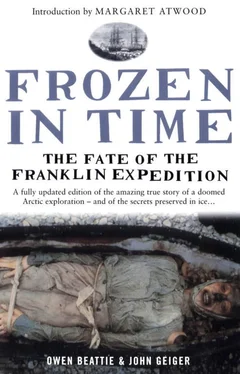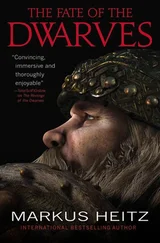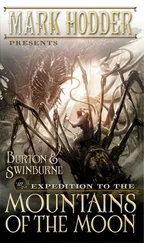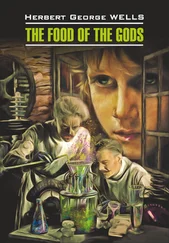I had the satisfaction of meeting with the first traces of Sir John Franklin’s expedition, consisting of fragments of naval stores, ragged portions of clothing, preserved meat tins, &c… and the spot bore the appearance of an encampment.
But those relics told only of a brief stop, perhaps for magnetic observation early in the expedition, and gave away nothing in regard to Franklin’s whereabouts.
Ommanney pushed on, combing the shoreline for clues, until a large cairn was spotted high up on the headland of a nearby islet named Beechey Island. Lieutenant Sherard Osborn, commander of the steamship HMS Pioneer, which was also part of the Royal Navy search expedition under the overall command of Captain Horatio Thomas Austin, painted a dramatic picture of the men rushing towards the “dark and frowning cliffs… too steep for even [a] snow-flake to hang upon”:
A boatful of officers and men proceeded on shore. On landing, some relics of European visitors were found; and we can picture the anxiety with which the steep slope was scaled and the cairn torn down, every stone turned over, the ground underneath dug up a little, and yet, alas! no document or record found.
Osborn was undeterred; he still held great hope that more discoveries would follow: “[The cairn] seemed to say to the beating heart, ‘follow them that erected me!’”
A flotilla of search ships converged on the area, among them the Lady Franklin under Captain William Penny. The gritty Scot swore to scour the area “like a blood-hound” until answers to the mystery were found. More traces of Franklin’s crew were discovered on Devon Island, this time at nearby Cape Spencer. Penny found the remains of a hut built of stones, artefacts that included scraps of newspaper dated September 1844, a fragment of paper with the words “until called,” more food tins, torn gloves—and that was all. Then, on 27 August, a breathless sailor brought Penny startling news: “Graves, Captain Penny! Graves! Franklin’s winter quarters!”
Dr. Elisha Kent Kane, ship’s surgeon under American searcher Edwin De Haven, was present when the news arrived and described what happened next:
Captain De Haven, Captain Penny, Commander Phillips, and myself… hurried on over the ice, and, scrambling along the loose and rugged slope that extends from Beechey to the shore, came, after a weary walk, to the crest of the isthmus. Here, amid the sterile uniformity of snow and slate, were the head-boards of three graves, made after the old orthodox fashion of gravestones at home.
The tombs lay side by side in a line with the headboards facing Cape Riley. Two of the grave mounds were “neatly paved round” with limestone slabs. Their inscriptions, chiselled into the headboards, read:
Sacred
to the
memory of
William Braine, R.M.,
H.M.S. Erebus
Died April 3d, 1846
aged 32 years
‘Choose ye this day whom ye will serve’
Joshua, ch. xxiv., 15.
The second was:
Sacred to the memory of
John Hartnell, A.B. of H.M.S.
Erebus,
died January 4th, 1846
aged 25 years.
‘Thus saith the Lord of Hosts, consider your ways.’
Haggai, i., 7.
The third grave, representing the earliest death, was not as carefully finished as the others, but Kane felt “its general appearance was more grave-like.” The headboard was inscribed:
Sacred
to
the memory of
John Torrington
who departed
this
life January 1st,
A.D. 1846,
on board of
H.M. ship Terror
aged 20 years
Osborn noted that some seashells from the bay had been collected and “prettily arranged… by some old messmates.” The orderly arrangement of what Kane called the “isthmus of the graves” reminded Osborn of a parish cemetery.
…it breathes of the quiet churchyard in some of England’s many nooks… and the ornaments that nature decks herself with, even in the desolation of the frozen zone, were carefully culled to mark the seaman’s last home.
The searchers hoped the discovery of the expedition’s winter campsite and the graves of its first three victims would somehow point to Franklin’s whereabouts. The dates inscribed on the headboards showed that the doomed expedition had passed the winter of 1845–46 nestled in a small bay on the east side of Beechey Island, and there was more.
The three Franklin expedition graves on Beechey Island.
Drawn from a sketch by Dr. E.K. Kane
Searchers sweeping the windblown island during the shortening days of late summer found other signs, including the remains of tenting sites, an armourer’s forge, a large storehouse, a carpenter’s house and a few other, smaller structures. Deep ruts left by sledges were found on the gravel terraces of Devon Island, leaving Osborn to observe “how little Franklin’s people were impressed with the importance of rendering their travelling equipment light and portable.” A polar bear killed by one of the searchers revealed an earlier bullet wound. The bullet was retrieved from the beast’s flesh and identified as having been fired from a weapon like those supplied to Franklin. Kane found “inexpressibly touching” the discovery of a little garden scraped into the gravel, with anemones still growing. Wrote Kane: “A garden implies a purpose either to remain or to return: he who makes it is looking to the future.” This discovery on Beechey Island, especially moving to a nation of gardeners, inspired a verse by Charles Dickens:
O then
Pause on the footprints of heroic men,
Making a garden of the desert wide
Where PARRY conquer’d and FRANKLIN died.
Another large cairn was discovered, this one made of more than 600 discarded food tins filled with gravel, but nowhere was there a message telling where Franklin and his crews had sailed. Why these empty cans had been stacked 7 feet (2.1 metres) high in such a manner was unclear. It was usual for Arctic expeditions to leave messages under cairns describing their current status and plans—but here there was no note. Such was the scale of popular interest in each development during the Franklin searches that even this peculiar discovery—a cairn of tins built without apparent purpose—found its way into another literary work, Walden, where Henry David Thoreau asked, “Is Franklin the only man who is lost, that his wife should be so earnest to find him?”
Wrote Thoreau: “Explore your own higher latitudes with shiploads of preserved meats to support you, if they be necessary; and pile the empty cans sky-high for a sign.” But a sign of what in this case? What did it mean? With each discovery the Franklin mystery only seemed to deepen. As well, the trail that began at Cape Riley on Devon Island seemed to end on Beechey Island, just 1¼ miles (2 km) away. Osborn expressed the mood of the searchers this way: “Everyone felt that there was something so inexplicable in the non-discovery of any record, some written evidence of the intentions of Franklin and Crozier on leaving this spot…”
Although death was expected on expeditions of discovery through accident or illness, three deaths during the first winter was still considered unusual. The suggestion that the graves at Beechey Island could represent problems with the expedition’s food supply was discussed by the searchers and publicly stated by Ommanney in evidence given to the British government in 1852: “We know that 3 of their men (young men) died the first year, from which we may infer they were not enjoying perfect health. It is supposed that their preserved meats were of an inferior quality.”
Читать дальше










